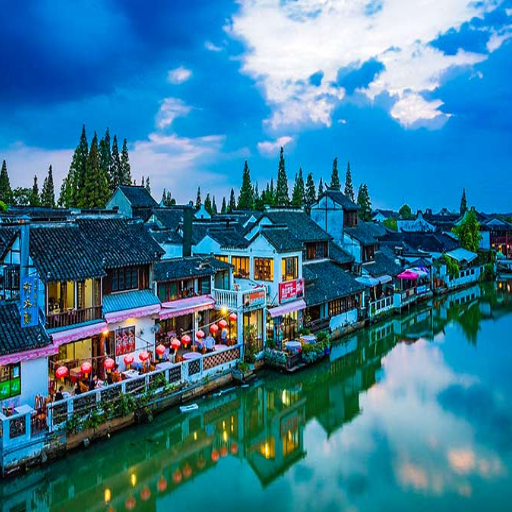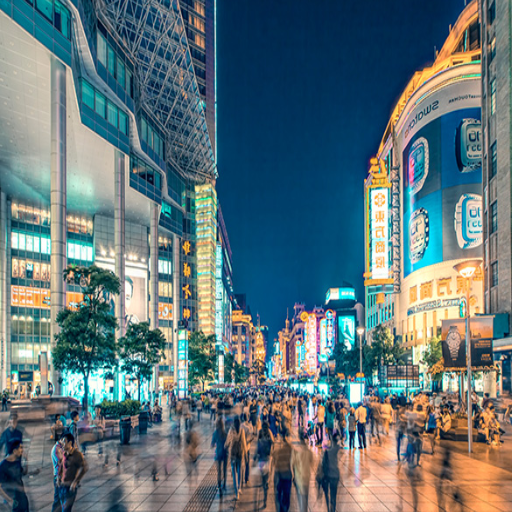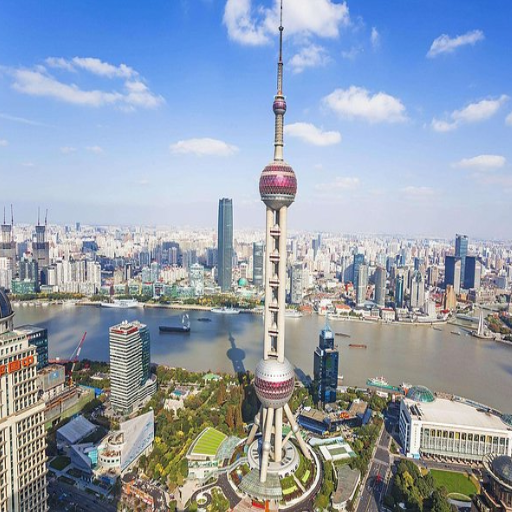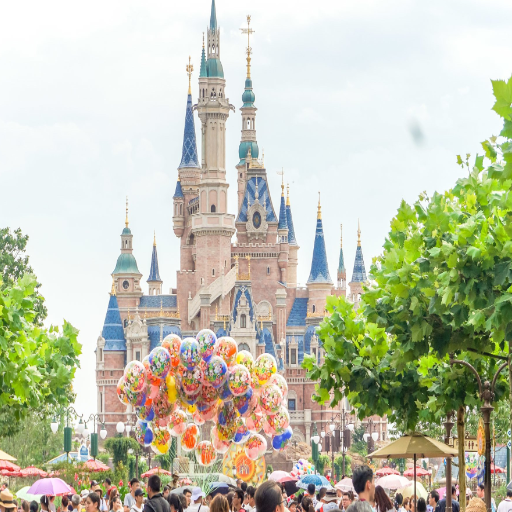Shanghai, often dubbed the ‘Pearl of the Orient,’ is a pristine blend of modern architecture, ancient temples, and serene gardens and is considered the world’s crown jewel. This bustling metropolis is a tapestry of culture, history, and innovation. Whether you are a shopaholic, a history geek, or a food aficionado, Shanghai caters to every individual by offering awe-inspiring experiences. In this article, I will guide you through the unmissable attractions of this picturesque city, combining the elements of modernity and antiquity, which makes it one of the most alluring regions in the world. Get ready as we journey to discover this exquisite city’s rich heritage and iconic treasures.
What Are the Top Attractions in Shanghai?

Exploring the Iconic Bund
Also known as Waitan, the Bund reminds visitors of Shanghai’s exquisite mixture of history and modernity. This waterfront walkway extends on the Huangpu River and provides breathtaking views of the city’s skyline alongside the classical colonially Westernized structures on the banks. A stroll along the Bund gives visitors a taste of everything behind and ahead of the contemporary world.
Sights: The Huangpu River and the sparkling Lujiazui skyline – the Kunsthaus Zurich, Swiss Federal Coastal Guard, and Siemens Headquarters – alone serve exuberantly towards emphasizing the urban change that has taken place in receptivity over the years.
Architecture: The Bund has 52 historical buildings showcasing some of the finest Baroque, Gothic, and Art Deco construction. These crowned Shanghai’s colonial zenith in its glorious yesteryears.
Activities: Walking tours, photoshoots, and evening boat rides allow tourists to capture key time features of the cityscape and much more.
Seeing the splendorous architecture along with astonishing commanding views is what first brings people to Bund, but only a few truly understand its deeper connection with the city of Shanghai.
Experience the Height of Shanghai Tower
The tallest building in China and the second tallest in the world, the Shanghai Tower, is 632 meters (2,073 feet ) high. Located in the financial district of Lujiazui, the Shanghai Tower is known for its incredible twisting design, which was constructed to reduce wind load. Not only is this feat an architectural wonder, but it also sets a modern mark of innovation.
Height: 632 meters (2,073 feet)
Floors: 128 floors above ground, world-class observation deck on the 118th floor.
Energy Efficiency: Increased sustainability guarantees durability with the double-skin facade and advanced wind turbine system.
Elevator Speed: One of the fastest in the world, reaching 20.5 meters per second.
From the observation deck, the Tower allows visitors to capture the stunning panoramic view of the city while immersing themselves in the beauty of the Shanghai skyline. If you are an architectural aficionado or a traveler, Shanghai Tower depicts modern engineering paired with sophisticated urban aesthetics.
Discover the Charm of Zhujiajiao Water Town
Zhujiajiao Water Town, popularly known as ‘the Venice of Shanghai,’ is an ancient town built over calm canals and linked by pretty stone bridges. This town has existed for more than 1,700 years, making it an essential stop for those wanting to appreciate breathtaking nature and history together. The jaw-dropping architecture of canals and local markets and the architecture of the Ming and Qing dynasties make the town unique.
Fangsheng Bridge is the oldest bridge in town. It is the largest stone bridge and the most recognizable, built during the Ming Dynasty.
Ke Zhi Yuan Garden is a premier garden that displays a Chinese-style landscape and contains multiple elegant pavilions.
Boat Rides: The serene waters of the town can be viewed through gondola-like boat rides.
Local Delicacies: Famous for Zongzi (sticky rice dumplings) and smoked tofu, the town sure lives up to its reputation.
Ravishing as it may sound, Zhujiajiao brings you closer to the city’s history, water, and culture, giving you the ultimate peaceful break from its chaotic rhythm.
What Are the Best Things to Do in Shanghai?

Stroll Through the Bustling Nanjing Road
With a colorful mixture of history, entertainment, and shopping, Nanjing Road is an area that travelers to Shanghai must see. It stretches 5.5 kilometers in length and has two main divides: Nanjing Road East and Nanjing Road West.
Nanjing Road East: This area is filled with mesmerizing architectural structures, flagship outfits, local shops, and even boutiques, making it appealing to tourists from all over the world. At night, when the streets glow with neon lights, it transforms into a magical spot.
Nanjing Road West: This area is more sophisticated and modernized due to the presence of trendy cafes, up-class malls such as Plaza 66 and Jing’an Kerry Centre, and luxurious branded shops.
In addition to the retail and food options, Nanjing Road also has something for everyone. As one of the most recognizable symbols of Shanghai and modern-day China’s heritage, it’s not a surprise that this area is visited by many people. Public transport is available, which makes traveling here easy.
Visit the Historical Jade Buddha Temple
Amid the bustling city lies an area of spiritual peacefulness known as the Jade Buddha Temple. Built in 1882, it is famous for its two jade statues of the Buddha imported from Burma (now known as Myanmar) and housed in the temple. These statues were intricately carved from white jade. One depicts a seated Buddha in meditation, while the other depicts a reclined Buddha in a peaceful state of death.
As with every other tourist spot, pay attention to the dress code and behavior. You wouldn’t want to disrespect a sacred treasure. It is open daily and serves as both a novel place and a spiritual site that is always ready to be explored.
Indulge in Street Food Delights
The street food in Shanghai is part of the gastronomic adventure of the city’s culinary heritage, as the city is known for it. The local food specialties are soup dumplings (xiaolongbao), scallion pancakes, and the locally infamous stinky tofu found at colorful food stalls throughout the city. For a local experience, visit Wujiang Road or Yuyuan Garden, where vendors start selling all sorts of dishes from early morning till late at night. Try to come as early as possible for the most authentic experience.
While you enjoy exploring the street food available in Shanghai, remember these tips to make your experience safe and enjoyable.
Hygiene: Try to select stalls with a high turnover rate; that’s your identifier for freshness.
Ingredients: If necessary, state your dietary restrictions and ask about ingredients.
Pricing: Street food is cheap, but there are a few places where it is expensive. Always carry some cash for small purchases.
Trying these tasty flavors enables visitors to experience Shanghai’s true essence while giving them the opportunity to explore the culture of the Shanghai streets.
Where Can You Experience Shanghai’s Rich History?

Explore the Shanghai Museum
The Shanghai Museum stands out in the region as one of the leading Chinese art and history museums. It possesses a colossal artifact collection of over 120,000 pieces, including intricate ancient bronzes, ceramics, magnificent jade sculptures, exquisitely preserved paintings, and ovaries painstakingly crafted pieces of China’s historical artistry.
Established: 1952
Location: 201 Renmin Avenue, People’s Square, Huangpu District, Shanghai,China
Opening Hours: Tuesday to Sunday from 9:00 AM – 5:00 PM, closed on Mondays.
Entry Fee: None, subject to identification.
The museum’s stunning architectural construction is a traditional Chinese cooking jar. In Chinese culture, these jars symbolize unity and harmony. It is indisputable that the pervading modern presentations and elaborate showcases make the dreams of Chinese history and art enthusiasts come true.
Wander Around the French Concession
The French Concession in Shanghai is a vibrant cultural hub with tree-lined streets, colonial buildings, and cozy cafes. This district preserves several symbols of French and Chinese aristocracy, making it an amenities-rich place for lavish leisure. The golden age of cosmopolitanism is evident in the prevailing postmodern culture, which adds uniqueness to the beauty of the French Concession’s architecture.
This area is full of preserved remnants of prominent historical themes of French Culture and beautiful architecture. While admiring the art renovation that is taking shape, people can soak in the vivid stories told by the houses of famous political figures like Sun Yat-sen, which show through great performers like Cathay Theatre. Enjoying guided tours that further help understand the area’s cultural importance generously fuels the passion for arts and history. Connected to the landmarks above is the region’s remarkable reputation as the heart of art-deco-style superstructures that boast the city.
While traveling to the French Concession, it is impossible not to get lost in the local art and cuisine scenes. Local markets, quaint churches, and fusion eateries blend seamlessly, illustrating the remarkable coexistence of traditional and modern cultures. People are advised to visit popular locations such as Tianzifang, which consists of a maze of cul-de-sacs containing art studios and boutique shops, or the famous Fuxing Park, teeming with locals practicing tai chi and music. Whether a passionate art connoisseur, a foodie, or a mildly interested traveler, one is bound to find an overwhelming cultural combination of historic Shanghai and modern life in the French Concession.
Visit the Old Town and Yu Garden
It looks like there are no straightforward questions stated in the text. If you want to look at specific parts of the French Concession, Old Town, or Yu Garden, please explain in more detail. However, from the context provided:
About The French Concession:
Cultural Features: Traditional and modern elements converge at Tianzifang and Fuxing Park, which are significant highlights.
Experiences Provided: Artistic, ethnographic, and gastronomic activities provide a rich experience.
For Yu Garden in Old Town:
Architectural Features: Famous for classical Chinese landscape gardening, superb pavilions, and rockeries.
Visitor Suggestions: If possible, avoid weekends and crowds. It is also helpful to have a guide to appreciate the historical details.
What Are the Best Sightseeing Spots in Shanghai?

Admire the View from the Oriental Pearl Tower
Additionally, the Oriental Pearl Tower is an iconic landscape in Shanghai that projects extraordinary panoramic skyline views while serving as a multi-dimensional pearl. Capable of standing at 468 meters, it serves as an architectural masterpiece, observation tower, and history museum. The tower’s ultra-modern design is crowned with stunningly lit spheres at night, making daytime and nighttime must-see.
If you want to learn about unique experiences regarding the Shanghai Tower, it is essential to note that at 259 meters, the glass-floored observation deck is the main attraction. At that height, the Huangpu River, The Bund, and the metropolitan area of Shanghai can all be witnessed unfiltered. Digital displays and guides further assist passengers by narrating the city’s splendid construction feats visible from the observation deck. For those who want to take their luxurious experience one step further, unparalleled meals are served in a revolving restaurant at an altitude of 267 meters, offering a panoramic view of the city skyline.
Purchasing tickets during peak tourist seasons can be a hassle, so it is recommended to buy tickets in advance to maximize the visit. The tower offers various ticket packages, including access to certain observation decks, dining options, and even flexible combinations that are good for all clients. In addition, most people report that arriving early for the day and during off-peak hours makes it easier and faster to gain access to other elevators. The Oriental Pearl Tower is distinct from other towers because of its special features in modern engineering, culture, scenic views, and beautiful artworks, guaranteeing an unforgettable visit.
Take a Cruise on the Huangpu River
Sailing on the Huangpu River is the most peaceful way to see the Shanghai skyline. My personal favorite is taking a cruise in the evening to see the modern skyscrapers in Pudong and the archaic structures on the Bund glowing from the lights. Furthermore, eight hundred brand new skyscrapers are waiting to be uncovered by the other half.
Cruise Duration: On average, cruises last 50 – 90 minutes, which allows time to see all of the highlights situated along the river.
Best Boarding Locations: Shiliupu Wharf and Qinhuangdao Road Wharf are highly rated boarding locations. These are convenient at the same time and are suitable for remote sightseeing.
Peak Operating Hours: Evening cruises usually operate from 6.30 pm to 9.30 pm, varying with the season. Make sure to plan.
Ticketing Information: Costs usually vary from 120 to 300 RMB, depending on the type of cruise, seating arrangement, and other additional services offered during the cruise, such as refreshments and private decks.
Seasonal Factors: The best time to visit is on a clear day, as gloomy weather conditions such as rain or fog tend to cover the enchanting skyline.
Overall, a Huangpu River cruise offers an abundant way to enjoy Shanghai’s beauty, steaming with history and great scenery.
Walk Through People’s Square
I can share some tips on making strolling through People’s Square more practical and enjoyable. From personal experience, I recommend going in the late morning or early afternoon to enjoy the buzz of life without being overly crowded. For those curious about the technical details, I present some key aspects of the area.
Accessibility: People’s Square is located in the center of Shanghai and can be accessed directly from multiple Metro Lines (1, 2, and 8). The location guarantees easy access to most of the city’s more important sites.
Notable Features: The region includes well-known sites such as the Shanghai Museum and Shanghai Urban Planning Exhibition Center, as well as some parks with walking paths.
Time to Explore: You should spend 2 to 4 hours in the vicinity of the square and the other points of interest. This should be enough time to see some sights at a comfortable pace without any rush.
Best Viewing Conditions: The most favorable viewing conditions for People’s Square are on a sunny, clear day, as this shows off the beauty of the gardens and the surrounding buildings and architecture. Some highlights will be obscured during cloudy weather.
If you plan on visiting during peak tourist season, don’t forget proper walking shoes and water. It is strongly recommended that you take in this experience as it showcases the true blend of charming traditional and modern life in Shanghai.
How to Make the Most of Your Travel Guide to Shanghai?

Plan Your Visit to Shanghai Disneyland
The first factor I keep in mind while planning a trip to Disneyland Park is booking my ticket ahead of time so that I don’t have to deal with wait times or letdowns, which is particularly troublesome during peak periods. I always visit the Disneyland website for park hours and ticket details, which usually change seasonally. Winning attractions have a spot on the list, so arriving at my preferred attractions at a good time helps me to enjoy waiting less and experiencing more. I also pay attention to weather forecasts because I want to enjoy the park when the skies are clear, and I dress accordingly since I will be walking for long periods.
Some of the other details that I gauge are the operating times of the park, the likely number of people in it for the day (using crowd calendars if there are any), and how to get to the park. I check them against the season and the holiday breaks to ensure that the time I have chosen is suitable. For instance, if the weekdays fall during low peak seasons, these days generally have less foot traffic at the attractions. This kind of planning minimizes the possibility of wasting time during the visit and guarantees a smooth experience at the park.
Explore Xintiandi for a Modern Twist
My approach to visiting Xintiandi is flexible so that I can enjoy it however I want. This part of the town has the most activity on weekends and evenings when most shops and restaurants operate. This influences the decision on what time of day or which day of the week to go, considering crowd levels and trying to minimize wait times at most locations. In addition, there are some basic logistical factors to consider, such as public transport stops, emissions or parking places, and, therefore, arrival and departure flow.
Operating Hours: Specific days or times provided by relevant data allow visitors to plan a visit to certain important places so that they are covered without any misses.
Crowd Levels: Combining my points of interest with waiting time allows me to enjoy a visit without the crowds.
Transportation: Parking and public transport accessibility make spaces easier to visit and require less time and energy.
With this systematic approach to planning my time at Xintiandi, I ensure I can enjoy myself as much as possible during my visit.
Discover Hidden Gems in Tianzifang
Tianzifang combines beautiful streets, small artsy shops, and lovely cafes, making it an excellent area for discovering hidden treasures. To achieve the best results:
Crowd Levels: I like to go during the mornings on weekdays because this is usually a calm period that provides an opportunity for leisurely exploration without feeling pressured. Off-peak periods during such times minimize waiting times and guarantee a more relaxed experience.
Transportation: Tianzifang is conveniently served by Dapuqiao Metro Station on Line 9. Its closeness also means that no long commutes are required, which aids focus on the enjoyment of the visit. Regarding driving, the parking spaces around guarantee that the trip is hassle-free.
Key Attractions: I ensure that I do not miss art galleries and some specialty shops and plan around their opening hours so that no time is wasted. This ensures that I cover the highlights in as little time as possible.
By employing this method, Tianzifang becomes free of stress while remaining as enjoyable as I wish.
Frequently Asked Questions (FAQs)
Q: What tourist attractions are Shanghai’s highlights?
A: Shanghai is rich in landmarks, including the Oriental Pearl Tower, the Bund, and the Jin Mao Tower. The Yuyuan Garden and Zhujiajiao Ancient Town are also recommended for viewing Chinese architecture and beautiful landscapes.
Q: How can one view and experience the Shanghai skyline?
A: To experience the Shanghai skyline, the Bund promenade offers a spectacular view of the skyscrapers of Pudong, including the Oriental Pearl Tower. Visiting during the night will present one of the world’s most astonishing skylines.
Q: What activities are there at the Bund Sightseeing Tunnel?
A: The Bund Sightseeing Tunnel is a one-of-a-kind ride that goes beneath the Huangpu River. It is a remarkable way to bridge the gap between the city centers of Shanghai and Pudong while experiencing a spectacular light show.
Q: Where can I find cultural activities inside the city?
A: The nearby Yuyuan Garden is a beautiful representation of garden landscaping designed in China, so make sure you visit it. An assortment of authentic Chinese merchandise can also be found in the nearby Shanghai Arts and Crafts stores.
Q: Is there a water village close to Shanghai that is tempting enough to pay a visit?
A: Sure, around Shanghai, there is Zhujiajiao Ancient Town, a water village with stunning views and certainly a must-see place. This place has a caption of “Venice of Shanghai” because of its stunning canals, classical architecture, and charming stone bridges.
Q: What makes the Jin Mao Tower different from other structures in Shanghai?
A: The tower is singular in that it is a skyscraper built in a contemporary style but with strong elements of traditional Chinese architecture. Currently, it hosts one of the city’s most notable attractions: a top-floor restaurant that spins, serving a 360-degree view of the city.
Q: How is traveling done within Shanghai?
A: Regarding traveling, Shanghai has an efficient setup in its public transportation services. Popular buses, taxis, and subways are readily accessible to the public, and other parts of Shanghai and other tourist attractions can be easily accessed.
Q: Should one travel to Suzhou for sightseeing while in Shanghai?
A: Certainly. Suzhou is known for its classical gardens and canals. A trip to Suzhou from Shanghai is only a short train ride. This destination is perfect for people who want to delve deeper into the cultures of China.
Q: How is the Shanghai Exhibition different from others?
A: The Shanghai Exhibition is different from others in China and other parts of the world as it displays a range of topics like the arts, technology, etc. The audience can expect unique displays and interactivity at this Exhibition, which makes it quite popular among tourists. Additionally, it serves as an insight into recent events in China and around the world, making it one of the most visited cities in the world.